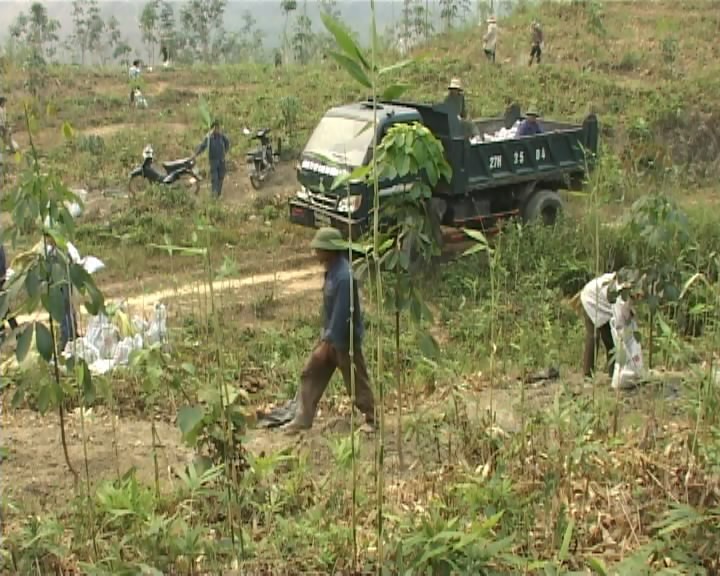(VOVworld) – Since 2008 the Vietnam Rubber Group has planted 3,300 hectares of rubber trees in Dien Bien province. This has reduced poverty and raised the standard of living.
 |
Dien Bien province reduces poverty by growing rubber trees
(Photo: dienbientv.vn) |
Rubber trees cover 5,100 hectares in Dien Bien, Muong Cha, and Tuan Giao district. After 8 years, the Dien Bien Rubber Company has begun extracting the latex, allying concerns about whether rubber trees are adapted to Dien Bien’s soil and climate.
Sin Van Minh, a Kho Mu man from Hin hamlet 1, Muong Cha district, said: “Rubber trees have been growing here for nearly 10 years and have begun to produce latex. We hope our poverty reduction efforts will be successful.”
Like Minh, many other rubber growers in Dien Bien are relieved to see the latex after a decade of waiting. In the past, their lives were completely dependent on rice farming.
Talking and laughing can be heard on the Dien Bien Rubber Farm in Thanh Chan village, Dien Bien district, where 100 people are learning how to scrape latex.
Some of them are permanent workers. Others came to help from neighboring villages and hamlets. Scraping latex is a new task so everybody is excited, Cho Thi Sinh, a Mong woman from Sa Long hamlet 2, Muong Cha district, said: “Scraping latex is not as easy as we taught. I’m happy to be instructed by agricultural engineers. I’ll do my best so that when more rubber is extracted, I’ll have a stable job and income.”
Phan Van Loi, Director General of the Dien Bien Rubber Company, said this year the company has begun extracting latex from 42 hectares of rubber trees in Thanh Nua and Muong Pon village, Dien Bien district.
He explained: “In our test run, the output was relatively high. It’s a good result for a 8-year investment by rubber companies in the northwest region, and for the Dien Bien Rubber Company in particular. Starting next year, we will begin extracting latex from a larger area of mature rubber trees. But we need to train more local farmers. That will increase their incomes and encourage them to devote more land to growing rubber trees.”
The latex harvested this year will be sold as raw latex. In 2017 a latex processor will be built. Approximately 600 hectares of rubber trees are almost ready for harvest, with an estimated productivity of 630 kilograms of latex per hectare. The locals will receive 10% of the profit.